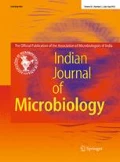Abstract
Algae are autotrophic organisms that are widespread in water bodies. Increased pollution in water bodies leads to eutrophication. However, algae growing in lakes undergoing eutrophication could be utilized towards the generation of added-value bio-electricity using microbial fuel cells (MFCs). In the present study, two methods of electricity generation using raw algae (RA) and RA + acetate (AC) as co-substrate were analyzed in single chamber air cathode MFCs. MFCs supplemented with RA and RA + AC clearly showed higher power density, greater current generation, and improved COD (chemical oxygen demand) removal, which demonstrated the feasibility of using AC as substrate for MFC. The MFC–RA + AC (0.48 mA) generated 28% higher current relative to that generated by MFC with RA alone. Notably, the maximum power densities generated by MFC–RA and MFC–RA + AC were 230 and 410 mW/m2, respectively. MFC–RA and MFC–RA + AC exhibited TCOD (total chemical oxygen reduction) removal values of 77% and 86.6%, respectively. Despite the high influent TCOD (758 mg/l) concentration, the MFC–RA + AC exhibited an 8.5% higher COD removal relative to that of MFC–RA (525 mg/l). Our current findings demonstrated effective energy generation using algae biomass with a co-substrate.




Similar content being viewed by others
References
Singh RK, Singh R, Sivakumar D, Kondaveeti S, Kim T, Li J, Sung BH, Cho BK, Dr Kim, Kim SC, Kalia VC, Zhang YHPJ, Zhao H, Kang YC, Lee J-K (2018) Insights into cell-free conversion of CO2 to chemicals by a multienzyme cascade reaction. ACS Catal. https://doi.org/10.1021/acscatal.8b02646
Kondaveeti S, Moon JM, Min B (2017) Optimum spacing between electrodes in an air-cathode single chamber microbial fuel cell with a low-cost polypropylene separator. Bioprocess Biosyst Eng 40:1851–1858. https://doi.org/10.1007/s00449-017-1838-3
Kim M, Hyun MS, Gadd GM, Kim GT, Lee SJ, Kim HJ (2009) Membrane-electrode assembly enhances performance of a microbial fuel cell type biological oxygen demand sensor. Environ Technol 30:329–336. https://doi.org/10.1080/09593330902732077
Pandey P, Shinde VN, Deopurkar RL, Kale SP, Patil SA, Pant D (2016) Recent advances in the use of different substrates in microbial fuel cells toward wastewater treatment and simultaneous energy recovery. Appl Energy 168:706–723. https://doi.org/10.1016/j.apenergy.2016.01.056
Kondaveeti S, Mohanakrishna G, Lee J-K, Kalia VC (2018) Methane as a substrate for energy generation using microbial fuel cells. Indian J Microbiol. https://doi.org/10.1007/s12088-018-0765-6
Venkata Mohan S, Mohanakrishna G, Reddy BP, Saravanan R, Sarma PN (2008) Bioelectricity generation from chemical wastewater treatment in mediatorless (anode) microbial fuel cell (MFC) using selectively enriched hydrogen producing mixed culture under acidophilic microenvironment. Biochem Eng J 39:121–130. https://doi.org/10.1016/j.bej.2007.08.023
Mohanakrishna G, Vanbroekhoven K, Pant D (2016) Imperative role of applied potential and inorganic carbon source on acetate production through microbial electrosynthesis. J CO2 Util 15:57–64. https://doi.org/10.1016/j.jcou.2016.03.003
Kondaveeti S, Choi K, Kakarla R, Min B (2014) Microalgae Scenedesmus obliquus as renewable biomass feedstock for electricity generation in microbial fuel cells (MFCs). Front Environ Sci Eng 8:784–791. https://doi.org/10.1007/s11783-013-0590-4
Bringmann G, Kühn R (1980) Comparison of the toxicity thresholds of water pollutants to bacteria, algae, and protozoa in the cell multiplication inhibition test. Water Res 14:231–241. https://doi.org/10.1016/0043-1354(80)90093-7
Velasquez-Orta SB, Curtis TP, Logan BE (2009) Energy from algae using microbial fuel cells. Biotechnol Bioeng 103:1068–1076. https://doi.org/10.1002/bit.22346
Rashid N, Cui Y-F, Saif Ur Rehman M, Han J-I (2013) Enhanced electricity generation by using algae biomass and activated sludge in microbial fuel cell. Sci Total Environ 457:91–94. https://doi.org/10.1016/j.scitotenv.2013.03.067
Wang H, Lu L, Cui F, Liu D, Zhao Z, Xu Y (2012) Simultaneous bioelectrochemical degradation of algae sludge and energy recovery in microbial fuel cells. RSC Adv 2:7228–7234. https://doi.org/10.1039/c2ra20631e
Kakarla R, Kim JR, Jeon B-H, Min B (2015) Enhanced performance of an air–cathode microbial fuel cell with oxygen supply from an externally connected algal bioreactor. Bioresour Technol 195:210–216. https://doi.org/10.1016/j.biortech.2015.06.062
Kondaveeti S, Kakarla R, Kim HS, Kim B-G, Min B (2017) The performance and long-term stability of low-cost separators in single-chamber bottle-type microbial fuel cells. Environ Technol 39:288–297. https://doi.org/10.1080/09593330.2017.1299223
APHA (2005) Standard methods for the examination of water and wastewater. American Public Health Association, Washington
Logan BE (2008) Microbial fuel cells. Wiley, Hobokem
Mohanakrishna G, Abu-Reesh IM, Kondaveeti S, Al-Raoush RI, He Z (2018) Enhanced treatment of petroleum refinery wastewater by short-term applied voltage in single chamber microbial fuel cell. Bioresour Technol 253:16–21. https://doi.org/10.1016/j.biortech.2018.01.005
Venkata Mohan S, Mohanakrishna G, Velvizhi G, Babu VL, Sarma PN (2010) Bio-catalyzed electrochemical treatment of real field dairy wastewater with simultaneous power generation. Biochem Eng J 51:32–39. https://doi.org/10.1016/j.bej.2010.04.012
Wang S, Huang L, Gan L, Quan X, Li N, Chen G, Lu L, Xing D, Yang F (2012) Combined effects of enrichment procedure and non-fermentable or fermentable co-substrate on performance and bacterial community for pentachlorophenol degradation in microbial fuel cells. Bioresour Technol 120:120–126. https://doi.org/10.1016/j.biortech.2012.06.022
Wei J, Liang P, Huang X (2011) Recent progress in electrodes for microbial fuel cells. Bioresour Technol 102:9335–9344. https://doi.org/10.1016/j.biortech.2011.07.019
Chandrasekhar K, Venkata Mohan S (2012) Bio-electrochemical remediation of real field petroleum sludge as an electron donor with simultaneous power generation facilitates biotransformation of PAH: effect of substrate concentration. Bioresour Technol 110:517–525. https://doi.org/10.1016/j.biortech.2012.01.128
Patel SKS, Kondaveeti S, Otari SV, Pagolu RT, Jeong SH, Kim SC, Cho B-K, Kang YC, Lee J-K (2018) Repeated batch methanol production from a simulated biogas mixture using immobilized Methylocystis bryophila. Energy 145:477–485. https://doi.org/10.1016/j.energy.2017.12.142
Patel SKS, Choi SH, Kang YC, Lee J-K (2017) Eco-friendly composite of Fe3O4– reduced graphene oxide particles for efficient enzyme immobilization. ACS Appl Mater Interfaces 9:2213–2222. https://doi.org/10.1021/acsami.6b05165
Acknowledgements
This research was supported by Basic Science Research Program through the National Research Foundation of Korea (NRF) funded by the Ministry of Education, Science and Technology (NRF-2018H1D3A2001746, 2015R1D1A1A01061279, 2013M3A6A8073184). This research was supported by 2017 KU Brain Pool of Konkuk University.
Author information
Authors and Affiliations
Corresponding authors
Rights and permissions
About this article
Cite this article
Kondaveeti, S., Mohanakrishna, G., Pagolu, R. et al. Bioelectrogenesis from Raw Algal Biomass Through Microbial Fuel Cells: Effect of Acetate as Co-substrate. Indian J Microbiol 59, 22–26 (2019). https://doi.org/10.1007/s12088-018-0769-2
Received:
Accepted:
Published:
Issue Date:
DOI: https://doi.org/10.1007/s12088-018-0769-2




